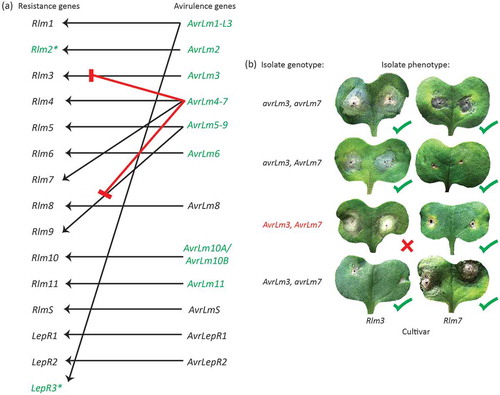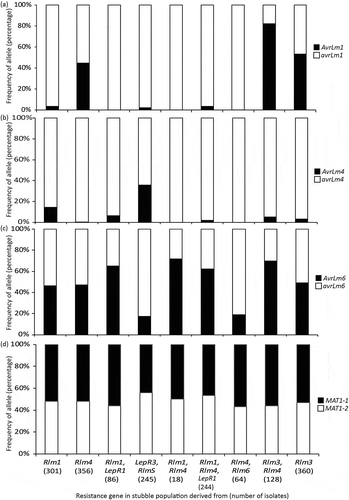Figures & data
Table 1. Canola/rapeseed (Brassica napus) production (million metric tonnes), area sown (million hectares) and yield (tonnes/hectare) over the past five years for specific countries.
Fig. 1 (Colour online) Interaction of Leptosphaeria maculans avirulence genes and Brassica resistance genes. (a) Fifteen resistance genes have been identified; two of which have been cloned (green). Eight of the corresponding avirulence genes have been cloned. Of these, AvrLm1-L3, AvrLm4-7 and AvrLm5-9 have dual specificity, recognised by two different resistance genes. The AvrLm10-Rlm10 interaction involves two avirulence genes (AvrLm10A/AvrLm10B). (b) The AvrLm4-7 gene is epistatic over AvrLm3 and AvrLm9 (represented by red lines in (a)). When the avirulent allele of AvrLm7 is present, isolates will be virulent towards Rlm3 (b) or Rlm9, regardless of the genotype at the AvrLm3 and AvrLm9 locus, respectively.

Table 2. Avirulence genes of Leptosphaeria maculans, mechanisms for virulence and technologies used to monitor their frequencies.
Table 3. Classification of resistance genes of Australian and Canadian commercial cultivars of Brassica napus.
Fig. 2 Changes in avirulence allele frequencies for AvrLm1 (a), AvrLm4 (b) and AvrLm6 (c) of Leptosphaeria maculans isolates collected from cultivars with different resistance genes in Australia. The frequency of the avirulence alleles differs depending on genotype of the cultivars from which the isolates were collected. The mating-type (d) allele was used as a control as the presence of resistance genes does not alter the frequency of the two mating types in fungal populations.

